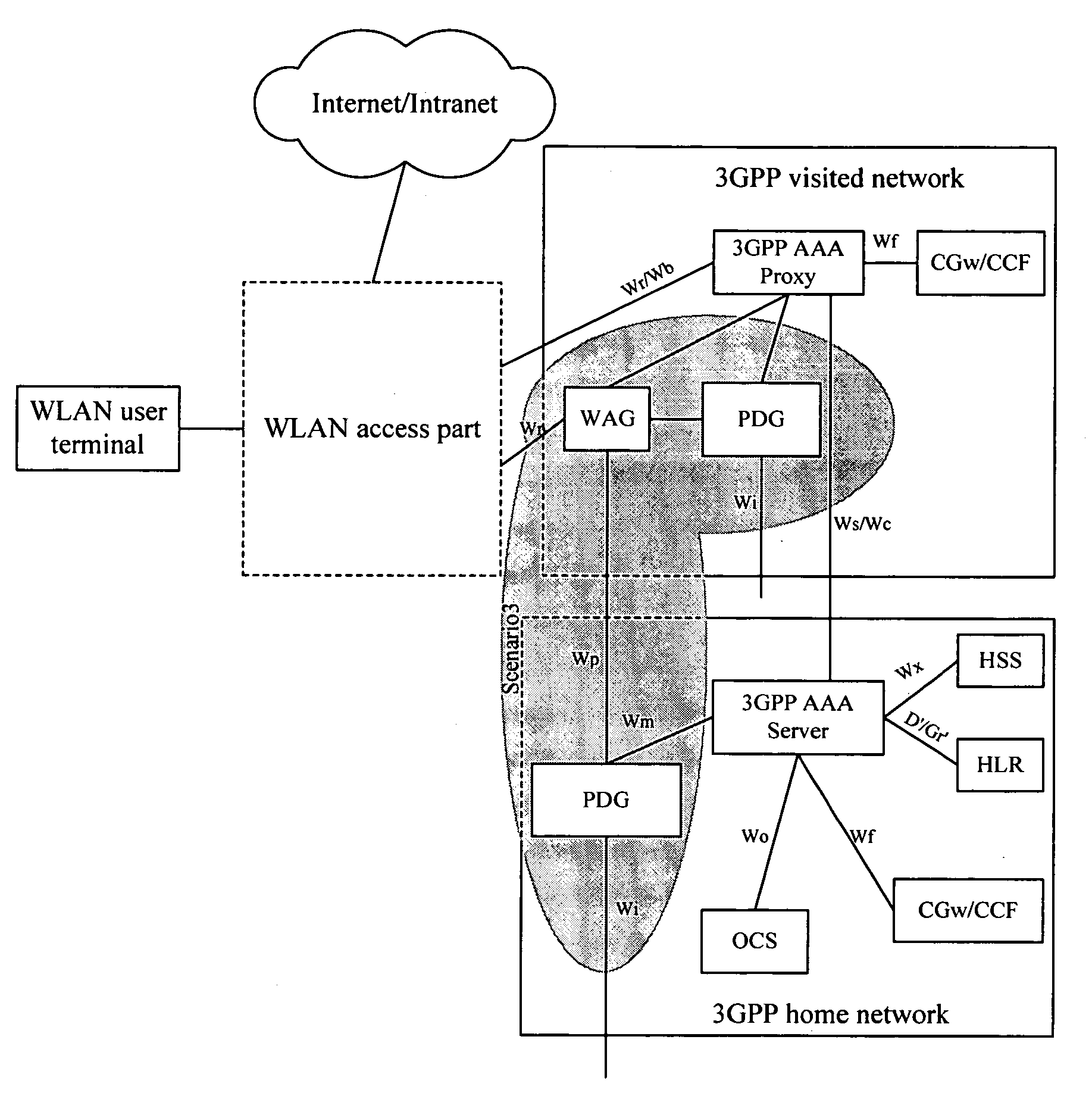Method for establishment of a service tunnel in a WLAN
a technology of service tunnels and tunnels, applied in the field of tunnel establishment methods, can solve the problem of not having a definite solution for the implementation of such a service tunnel, and achieve the effect of convenient and flexible implementation
- Summary
- Abstract
- Description
- Claims
- Application Information
AI Technical Summary
Benefits of technology
Problems solved by technology
Method used
Image
Examples
embodiment 1
[0059] As shown in FIG. 4, in a 3 GPP-WLAN inter-working network, the WLAN user terminal A selects a service, and finds that the selected service is provided by a PDG through service analysis. Then the PDG is the destination PDG to which the WLAN user terminal to be connected. In this embodiment, the service authentication authorization unit is 3 GPP AAA Server. In this embodiment, when the user terminal A is accessing to WLAN, firstly, WLAN access network and 3 GPP AAA Server perform access authentication and authorization, as shown in step 400. Later, When the WLAN user terminal A requests a service provided by the PDG, the procedure of establishing tunnel between the WLAN user terminal A and the PDG includes the following steps.
[0060] Step 401: the WLAN user terminal sends an End-to-End (E2E) tunnel establishing request, which includes user identity and user subscription information used for authentication, to the PDG.
[0061] Step 402-step 403: having received the E2E tunnel est...
embodiment 2
[0064] As shown in FIG. 5, the condition and implementation of this embodiment is similar to that of Embodiment 1. The only differences are: in step 501, when the WLAN user terminal A sends a tunnel establishing request to the PDG, the request includes the currently possessed certificate or an certificate-index identity used for certificate query; so in step 503, the 3 GPP AAA Server, according to the self-recorded information or the information obtained through interaction with the certificate server, determines whether the certificate currently possessed by the WLAN user terminal is legal, if so, the authentication is successful, and execute steps 504 to 507, otherwise; the authentication fails, and then end the current procedure.
[0065] In this embodiment, step 502 is completely the same as step 402 of Embodiment 1, and Steps 504 to 507 are completely the same as Steps 404 to 407 of Embodiment 1, respectively.
embodiment 3
[0066] As shown in FIG. 6, the condition and implementation of this embodiment is similar to that of Embodiment I except that, in step 601, when the WLAN user terminal A sends a tunnel establishing request to the PDG, the request includes a shared secret TID currently possessed by the WLAN user terminal A. So in step 603, the 3 GPP AAA Server also acts as an entity of BSF and determines whether the received TID is legal according to the self-recorded information; if legal, the initial authentication is successful, then the 3 GPP AAA Server sends the TID and related shared secret information, which at least includes the Ks, to the PDG that is an entity of NAF in the GBA framework in this case, and the PDG, according to the shared secret information, establishes the trust relation with the user terminal through further negotiation with the user terminal, and then executes Steps 604 to 607; otherwise, the authentication fails, the current procedure is ended, and the user terminal may n...
PUM
 Login to View More
Login to View More Abstract
Description
Claims
Application Information
 Login to View More
Login to View More - R&D
- Intellectual Property
- Life Sciences
- Materials
- Tech Scout
- Unparalleled Data Quality
- Higher Quality Content
- 60% Fewer Hallucinations
Browse by: Latest US Patents, China's latest patents, Technical Efficacy Thesaurus, Application Domain, Technology Topic, Popular Technical Reports.
© 2025 PatSnap. All rights reserved.Legal|Privacy policy|Modern Slavery Act Transparency Statement|Sitemap|About US| Contact US: help@patsnap.com



